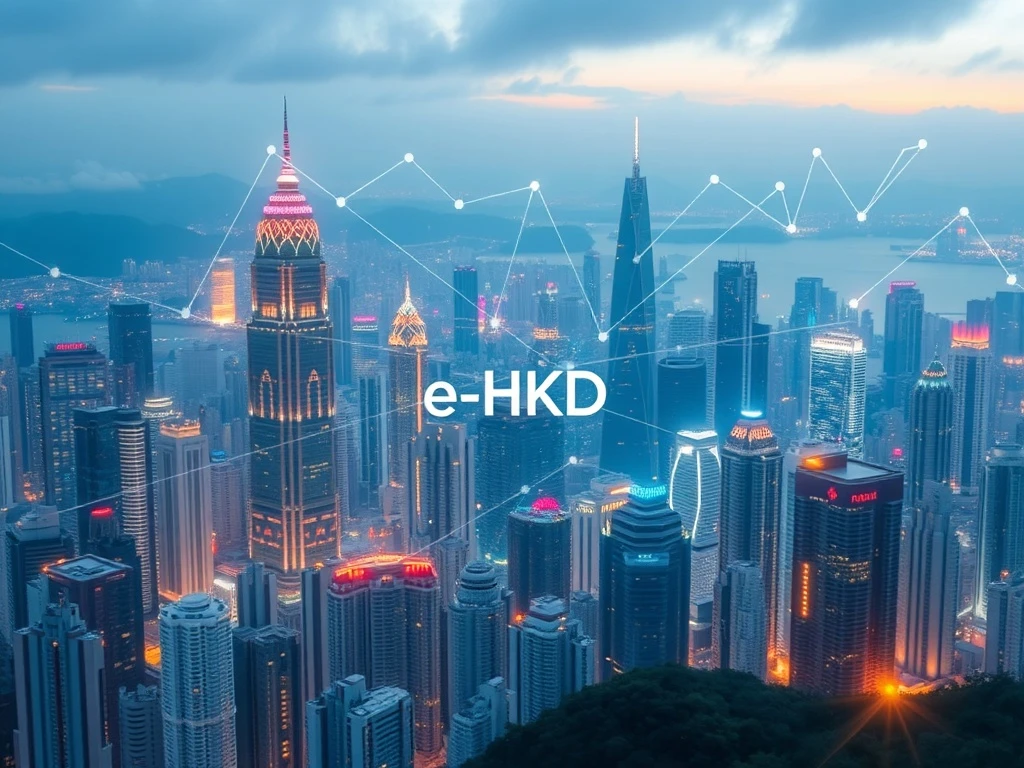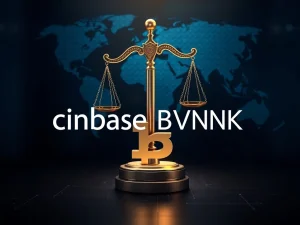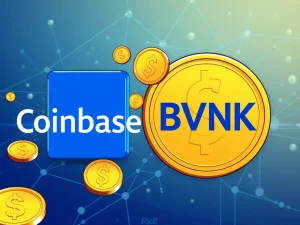Hong Kong Tokenization Revolutionizes Finance: HKMA Unveils Ambitious Fintech 2030 Strategy

The financial world stands at a pivotal moment. Indeed, Hong Kong is leading a remarkable transformation. The Hong Kong Monetary Authority (HKMA) has launched its comprehensive Fintech 2030 strategy. This bold initiative positions Hong Kong Tokenization at its core. It aims to reshape the region’s financial landscape for the next five years. For those invested in cryptocurrencies and blockchain technology, this strategy signals a profound shift. It promises greater integration of digital assets into mainstream finance. This strategic move could unlock immense potential across global markets.
HKMA Fintech 2030: A Vision for Digital Dominance
The HKMA’s Fintech 2030 strategy represents a clear roadmap. It outlines Hong Kong’s ambition to become a leading global fintech hub. This comprehensive plan focuses on four strategic pillars. These pillars are collectively known as “DART.” DART encompasses data, artificial intelligence (AI), resilience, and tokenization. The strategy includes over 40 distinct initiatives. These initiatives aim to foster innovation and strengthen the financial ecosystem. Consequently, Hong Kong seeks to maintain its competitive edge. This proactive approach ensures the city remains at the forefront of financial technology. The HKMA’s commitment to this vision is strong. They actively engage with industry stakeholders. This collaboration drives forward the digital transformation.
The DART framework provides a robust structure. It guides the development of new financial services. For instance, data analytics will enhance market insights. AI integration will streamline operations. Resilience measures will fortify the financial system. Most importantly, tokenization will unlock new asset classes. This multi-faceted strategy addresses both opportunities and challenges. It prepares Hong Kong for a rapidly evolving global economy. Ultimately, the HKMA Fintech 2030 strategy is a testament to foresight. It underscores a dedication to progress and innovation in finance.
Accelerating RWA Tokenization Across Financial Assets
A central tenet of the Fintech 2030 strategy is the acceleration of RWA Tokenization. This involves converting real-world assets into digital tokens on a blockchain. These assets can range from real estate to commodities. Financial assets, such as bonds and equities, are also prime candidates. The HKMA plans to lead by example. They will regularize the issuance of tokenized government bonds. This pioneering step sets a precedent for other financial institutions. Furthermore, the HKMA explores tokenizing Exchange Fund papers. These initiatives demonstrate a serious commitment. They showcase the practical application of tokenization technology.
Tokenization offers numerous benefits. Firstly, it enhances liquidity. Assets that were once illiquid can be fractionalized and traded easily. Secondly, it improves transparency. Blockchain records provide an immutable audit trail. Thirdly, it reduces costs. Intermediaries become less necessary, streamlining processes. Fourthly, it broadens access. Smaller investors can participate in markets previously exclusive to institutions. This democratizes investment opportunities. The HKMA recognizes these advantages. Therefore, they actively promote the adoption of RWA tokenization. This approach promises to revolutionize how assets are owned, transferred, and managed. It creates a more efficient and inclusive financial system. Such advancements will significantly boost Hong Kong’s financial infrastructure.
The scope of RWA tokenization extends beyond government instruments. The HKMA encourages private sector involvement. They aim to foster a vibrant ecosystem for tokenized assets. This includes collaborating with banks, fintech firms, and technology providers. Such partnerships are crucial. They facilitate the development of new products and services. Moreover, they ensure regulatory compliance. The HKMA’s proactive stance provides clarity. It builds confidence within the industry. Consequently, more institutions are likely to explore tokenization. This widespread adoption will solidify Hong Kong’s position. It will establish the city as a leader in digital asset innovation.

e-HKD Stablecoin: Enabling Seamless Blockchain Settlements
Integral to Hong Kong’s digital future is the launch of the new e-HKD Stablecoin. The HKMA will issue this digital currency. It recently completed a successful pilot program. This program demonstrated the stablecoin’s versatility. Participants used e-HKD for several key functions. These included:
- Settlement of tokenized assets
- Offline payments
- Programmability features
These trials proved the stablecoin’s practical utility. They confirmed its potential to enhance digital transactions. The e-HKD will serve as a crucial component. It will facilitate efficient and secure blockchain settlements. This digital currency represents a significant step forward. It bridges traditional finance with the burgeoning digital asset space.
The HKMA’s vision extends further. They foresee a future where various forms of digital money coexist. These include the e-HKD, tokenized deposits, and regulated stablecoins. All these digital monies will enable settlements on blockchains. This multi-faceted approach offers flexibility. It caters to diverse needs within the financial system. The integration of a central bank digital currency (CBDC) like e-HKD provides stability. It also offers regulatory oversight. This builds trust among users and institutions. The development of e-HKD is not just a technological feat. It is a strategic move to future-proof Hong Kong’s monetary system. It prepares the city for an increasingly digital global economy.
The pilot program’s success underscores the potential. It shows how a CBDC can facilitate real-world applications. For instance, its use in tokenized asset settlements streamlines transactions. It reduces settlement risk. Its offline payment capabilities ensure accessibility. This is especially true in scenarios without internet connectivity. Furthermore, programmability opens new avenues. It allows for automated payments and smart contract execution. These features are vital for a modern financial infrastructure. The e-HKD stablecoin therefore plays a transformative role. It is a cornerstone of Hong Kong’s digital finance aspirations.
Project Ensemble: Fostering Collaboration for Blockchain Settlements
The HKMA is also driving collaboration. It works closely with industry players. It also engages with other central banks. This collaborative spirit fuels the upcoming pilot, Project Ensemble. This initiative aims to test Hong Kong’s tokenization plans further. Project Ensemble is set to launch soon. It will explore the interoperability of different digital assets. It will also examine the efficiency of cross-border Blockchain Settlements. This project is a critical step. It moves from theoretical concepts to practical implementation.
Project Ensemble focuses on key areas. It will investigate the legal frameworks for tokenized assets. It will also assess the technological infrastructure required. Moreover, it will address potential risks. These include cybersecurity and data privacy. The project involves a diverse group of participants. These include commercial banks, fintech innovators, and legal experts. Their collective expertise is invaluable. It ensures a comprehensive evaluation of tokenization’s potential. This collaborative approach minimizes fragmentation. It promotes standardized practices within the digital asset ecosystem. The HKMA believes in shared learning. Therefore, it actively seeks international partnerships. These collaborations will inform best practices globally.
The goals of Project Ensemble are ambitious. It seeks to establish Hong Kong as a leader in digital asset innovation. It aims to develop a robust and secure environment for tokenized assets. Furthermore, it intends to enhance the efficiency of financial markets. By working together, participants can overcome complex challenges. They can collectively build a more resilient digital financial system. The insights gained from Project Ensemble will be crucial. They will shape future regulatory policies. They will also guide technological developments. This proactive engagement ensures Hong Kong remains at the cutting edge of financial technology.
AI Integration: Boosting Accessibility and Trust
Beyond tokenization, the Fintech 2030 strategy integrates Artificial Intelligence (AI). The HKMA aims to incorporate AI into the financial system. This strategic move seeks to enhance various aspects of banking services. By leveraging AI, the HKMA aims to:
- Boost accessibility for customers
- Improve responsiveness to market changes
- Enable greater customization of financial products
These enhancements promise a more user-friendly and efficient banking experience. AI-powered tools can personalize financial advice. They can also automate routine tasks. This frees up human resources for more complex issues. Furthermore, AI can detect fraud more effectively. It enhances security for all users. The responsible deployment of AI is paramount. The HKMA emphasizes maintaining transparency and accountability. This approach ensures public trust in AI-driven financial services. Ethical considerations guide every step of AI integration. This commitment to trust is foundational. It ensures that technological advancements benefit everyone safely.
The integration of AI extends to regulatory oversight. AI tools can analyze vast amounts of data. This helps regulators identify emerging risks. It also allows them to monitor market trends more efficiently. Predictive analytics can anticipate potential financial instability. This enables timely interventions. Consequently, the financial system becomes more stable. The HKMA is exploring AI applications for compliance. This can automate checks and reduce manual errors. Such innovations streamline regulatory processes. They ensure adherence to complex rules. Ultimately, AI serves as a powerful enabler. It strengthens both the efficiency and integrity of Hong Kong’s financial sector. This dual benefit underscores its strategic importance.
Hong Kong’s Broader Vision: A Global Digital Asset Hub
The Fintech 2030 strategy is part of a larger ambition. Hong Kong seeks to solidify its position as a global digital asset hub. This involves creating a conducive regulatory environment. The HKMA works closely with other government bodies. They develop clear guidelines for virtual asset service providers. This regulatory clarity attracts innovation. It also provides investor protection. Furthermore, Hong Kong actively promotes talent development. It invests in education and training programs. These initiatives build a skilled workforce. This workforce can support the growing digital finance industry. The city’s strategic location also plays a role. It serves as a gateway between mainland China and international markets. This unique position enhances its appeal as a digital finance center.
The HKMA’s strategy also considers global trends. It learns from other jurisdictions. It adapts best practices to Hong Kong’s unique context. For example, the focus on RWA tokenization aligns with global financial innovation. The development of e-HKD places Hong Kong among leading central banks exploring CBDCs. This forward-looking approach ensures competitiveness. It allows Hong Kong to attract significant investment. The city aims to be a preferred destination for fintech companies. It also wants to be a hub for digital asset exchanges. The comprehensive nature of the Fintech 2030 strategy reflects this grand vision. It is a commitment to long-term growth and leadership in digital finance.
Conclusion: A Future Forged in Digital Innovation
In summary, the HKMA’s Fintech 2030 strategy marks a new era for Hong Kong’s financial sector. Hong Kong Tokenization is not merely a buzzword. It is a fundamental pillar of this transformative plan. The strategy leverages the power of data, AI, and resilience. It specifically champions the widespread adoption of RWA tokenization. Furthermore, the introduction of the e-HKD Stablecoin promises to revolutionize Blockchain Settlements. Project Ensemble will further test and refine these initiatives. The integration of AI will boost financial service accessibility. It will also enhance public trust. Hong Kong is proactively building a robust digital economy. This comprehensive approach positions the city as a formidable leader. It stands at the forefront of global financial innovation. The future of finance looks decidedly digital, and Hong Kong is ready to lead the way.







